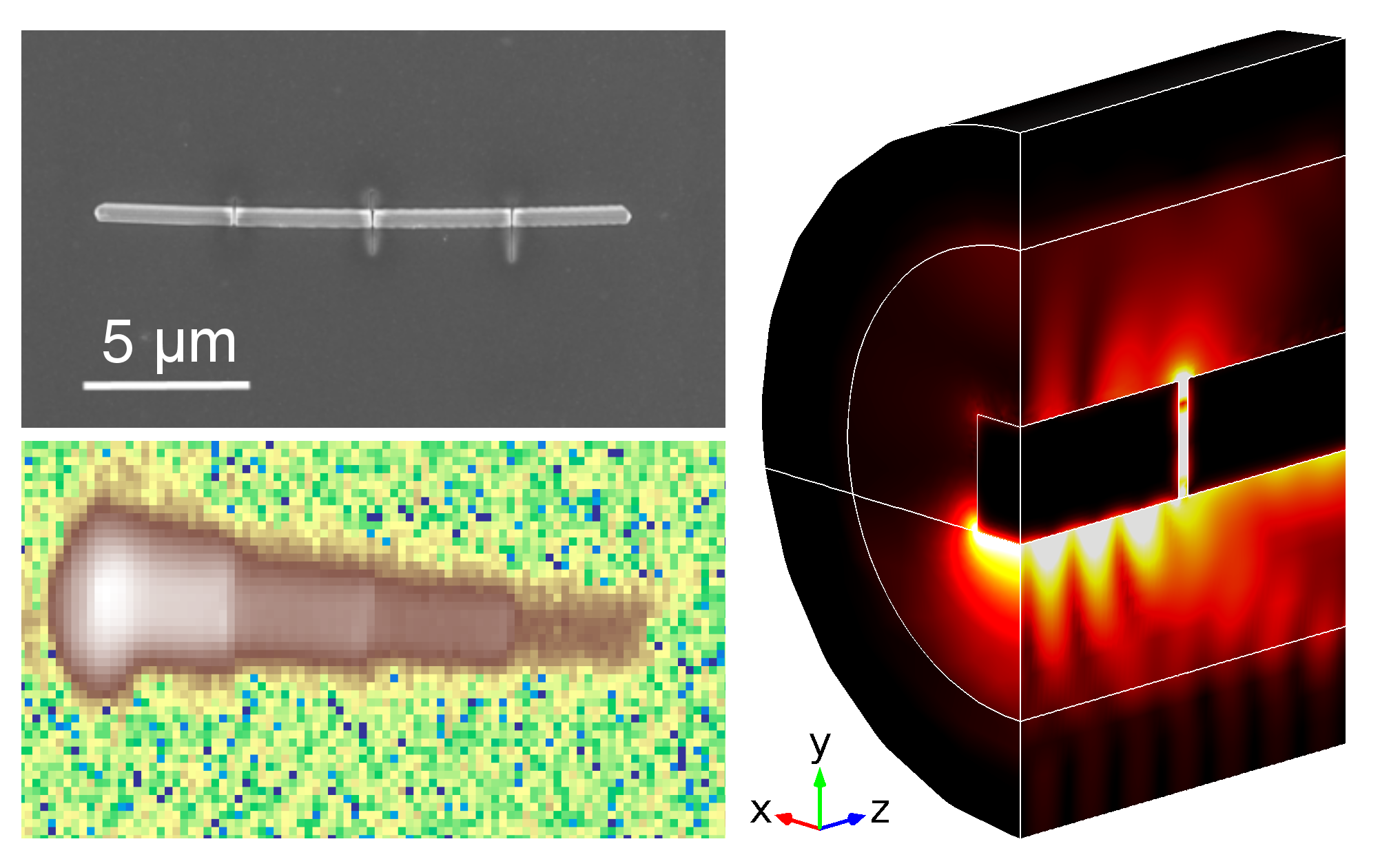Role of Resonances in the Transmission of Surface Plasmon Polaritons between Nanostructures
Understanding how surface plasmon polaritons (SPPs) propagate in metal nanostructures is important for the development of plasmonic devices. In this paper, we study the transmission of SPPs between single-crystal gold nanobars on a glass substrate using transient absorption microscopy. The coupled structures were produced by creating gaps in single nanobars by focused ion beam milling. SPPs were launched by focusing the pump laser at the end of the nanobar, and the transmission across the gaps was imaged by scanning the probe laser over the nanostructure. The results show larger losses at small gap sizes. Finite element method calculations were used to investigate this effect. The calculations show two main modes for nanobars on a glass surface: a leaky mode localized at the air−gold interface, and a bound mode localized at the glass−gold interface. At specific gap sizes (approximately 50 nm for our system), these SPP modes can excite localized surface plasmon modes associated with the gap, which dissipate energy. This increases the energy losses at small gap sizes. Experiments and simulations were also performed for the nanobars in microscope immersion oil, which creates a more homogeneous optical environment, and consistent results were observed.


Leave a Reply